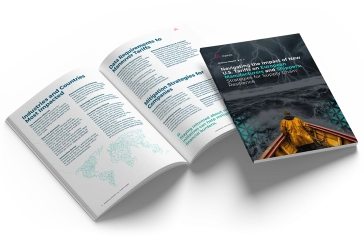About the report
This comprehensive report examines the multifaceted impact of newly expanded U.S. tariffs on European manufacturers and shippers. Based on insights from industry experts and current trade data, the report provides a detailed analysis of the tariff landscape, identifies the most affected industries and countries, and outlines actionable strategies to mitigate risks and build supply chain resilience. Essential reading for supply chain professionals navigating the complexities of transatlantic trade in 2025.
The tariff challenge: adapting or falling behind?
European manufacturers face a pivotal decision as new U.S. tariffs align with fluctuating steel prices. Analysis of 1996-2024 data shows significant volatility, with 2025 forecasts indicating continued price pressure from the 25% expanded tariffs. Companies must decide: absorb these costs or restructure supply chains? The answer varies based on industry exposure, geographic footprint, and operational flexibility.
European businesses are facing unprecedented tariff pressures
U.S. tariffs affect European countries and industries differently. Germany's automotive sector faces the greatest impact, with Italy also heavily affected. Steel and aluminum producers across Europe risk major export losses. French and Italian luxury brands must make difficult pricing decisions, while pharmaceutical companies struggle with supply chains. Agricultural exporters, especially in wine and spirits, face reduced U.S. market access. These varied impacts require customized strategies rather than universal solutions.
Moment of reflection: 6 questions for supply chain leaders in 2025
As you evaluate your organization's exposure to U.S. tariffs, here are some critical questions to consider:
- How exposed is your industry to the newly imposed 25% tariffs on steel and aluminum?
- Have you analyzed your cost structure to understand the financial impact of tariffs on your supply chain?
- Are you leveraging customs data and TARIC codes to optimize your supply chain decisions?
- Have you explored Free Trade Zones (FTZs) as a mechanism for tariff mitigation?
- Is your organization using predictive analytics to forecast tariff impacts and identify alternative strategies?
- Have you evaluated nearshoring or reshoring opportunities to maintain competitiveness in the U.S. market?
